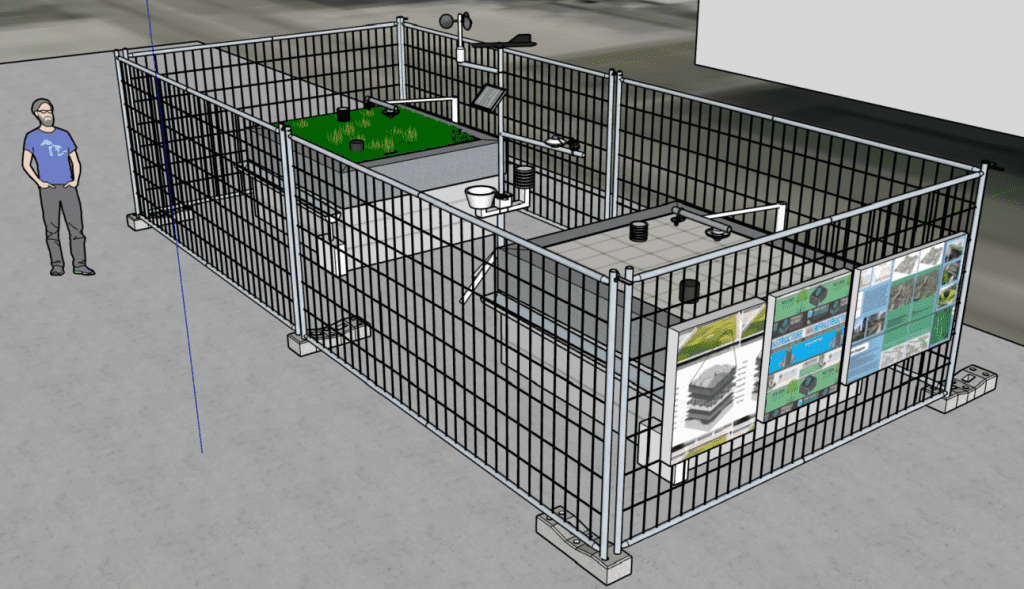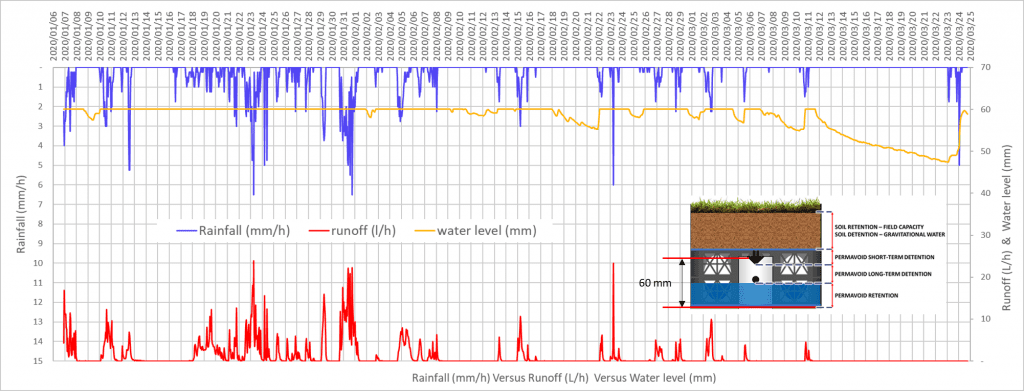BCIT – Centre for Architectural Ecology
Innovations in Architectural/Building design to help transform the urban environment to become human-friendly, energy-balanced, water-circular, and nature-inclusive.
Energy and Water Balances of Advanced Vegetative Roof Systems, and their Integration to the Urban Environment
“Buildings are designed with little connection to the actual site and their surroundings, and vice versa, urban environments are environmentally disconnected from buildings. The research aims to create a platform to train students and investigate about how to support the design more comfortable and healthier outdoor environments, as well as how to design stronger environmental connections between buildings and their surroundings.”
Climate change requires radical changes on how we design buildings and urban environments as interconnected, rather than isolated, systems. Therefore, data and knowledge (tools and methods) are urgently required on how to plan and design the interconnectedness of these systems so that they are able to synergize with each other. Those interconnections could be classified as: water, air, thermal, and human interconnections. Each one of these interconnections involves its own complexities and with multiple dimensions that affect the climate, people, and the environment.
- Harvy Takhar Phase 1: Experimental planning and setup, analysis of hydrological and thermal response (complete)
- Mehrnoosh Moghanian Phase 2: Modeling hydrological response (complete)
- Mahdieh Heydari Phase 3: Green spaces, heat island, and outdoor thermal comfort (complete)
- Nwe Ni Win Phase 4: Large scale pilot study on vegetative building-urban integration (in progress…)


The problem
- Climate change will increase storms/intensity in winter and reduce rainfall in summer.
- Our cities have disrupted the natural hydrologic cycle in the region.
- Hard surfaces channel water away through pipes, rather than allowing it to be naturally treated by the soil, while recharging the soil.
- Piping infrastructure capacity cannot cope with storm events, which leads to more frequent and more severe flood events.
- Pipes are aging and is costly to replace them and upgrade them.
- Hard surfaces create hot and cold thermal air pockets that overheat or undercool cities depending on the season.
Objectives
- To assess roof capacity to manage water and moderate its microclimate conditions during all seasons.
- To provide preliminary data to help design and size these systems within interconnected urban green infrastructure solutions.
- To monitor the health of the vegetation throughout the year and predict potential for GHG absorption.
Solution
- Rethink water management through nature-based solutions.
- Build interconnectedness between building and urban systems, and between natural and artificial subsystems.
- Engineer nature-based ecological urban systems.
What is so special about these roofs?
- Winter/storm events: enhanced rain-runoff detention/delay.
- Summer draught: enhanced rain water retention to feed the plants.
- Enhanced evapotranspiration to cool the environment.
- Maintain cooler ground temperatures due to water recharge.
- Resilient/Healthier plants: ↑ GHG absorption, ↓ heat island.
How do these roofs work?
- Soil retention (field capacity): when soils are dry, water retention is the primary access of water to plants for evapotranspiration.
- Soil detention (gravitational water): slows water drain into lower layers.
- Reservoir detention (short-term): delays sewer discharge rates.
- Reservoir retention (long-term): retains water to feed the plants through capillarity via the wicking cones and the wicking geotextile.
- Engineered/adjustable water detention/retention drain: controls flow from detention/retention reservoir.
- Base drain. a) Binary (open: winter, closed: summer, spring, fall), b) Intelligent: decides water flow based on desired parameters.
Acknowledgements
Phaase 1 of this project was funded by CleanBC. Phase 1 was conducted in collaboration with the City of Vancouver, and in partnership with the following companies: ABT Inc. Permavoid, Otomox, Helios, Renoscience, and IKO.